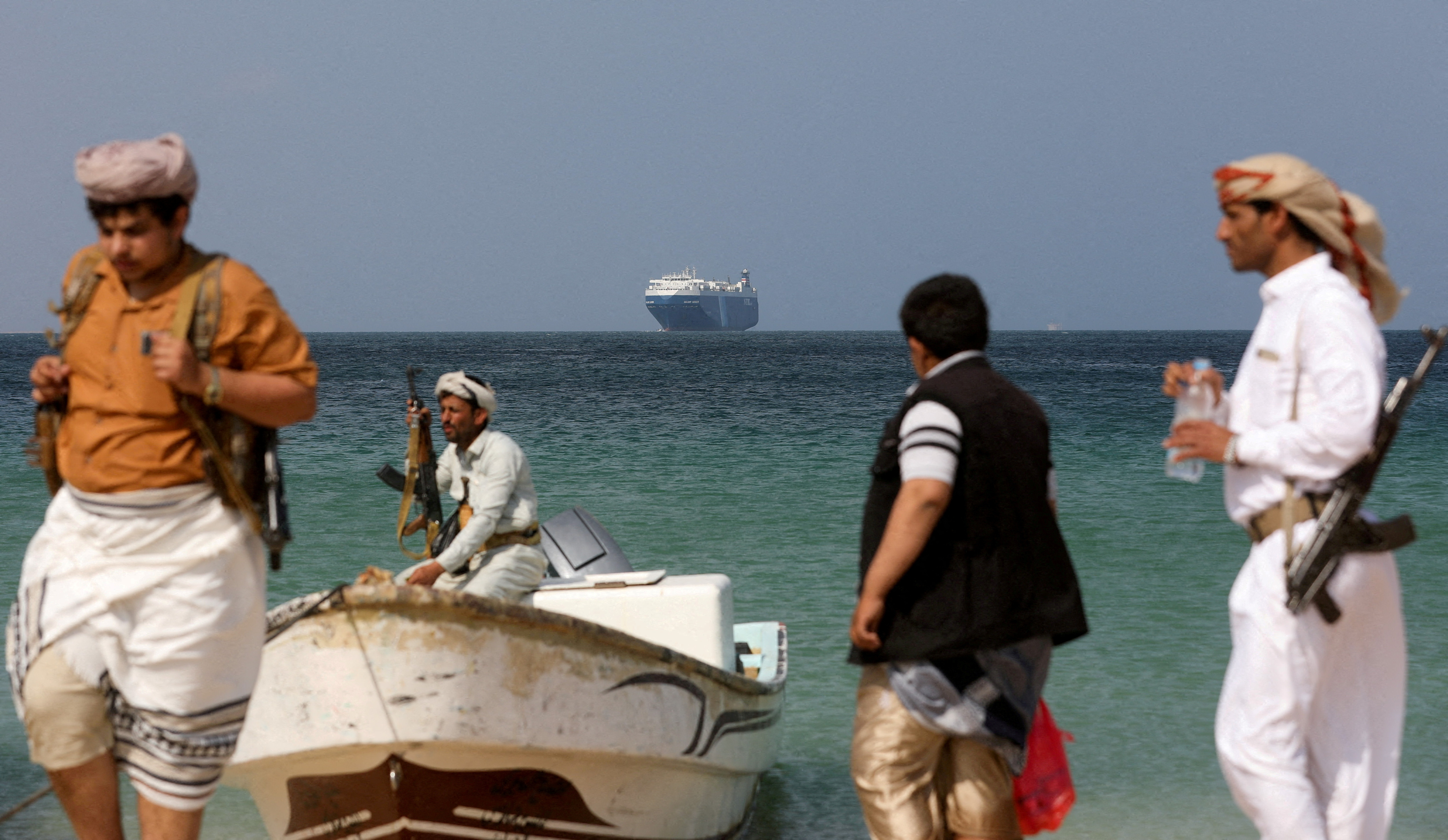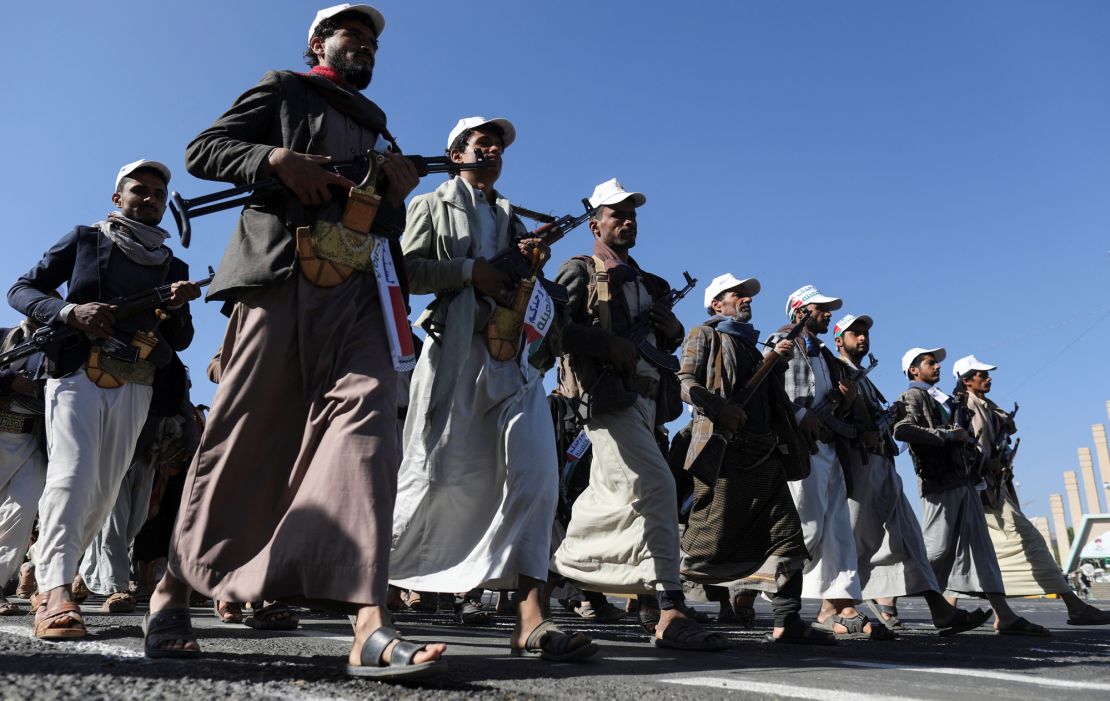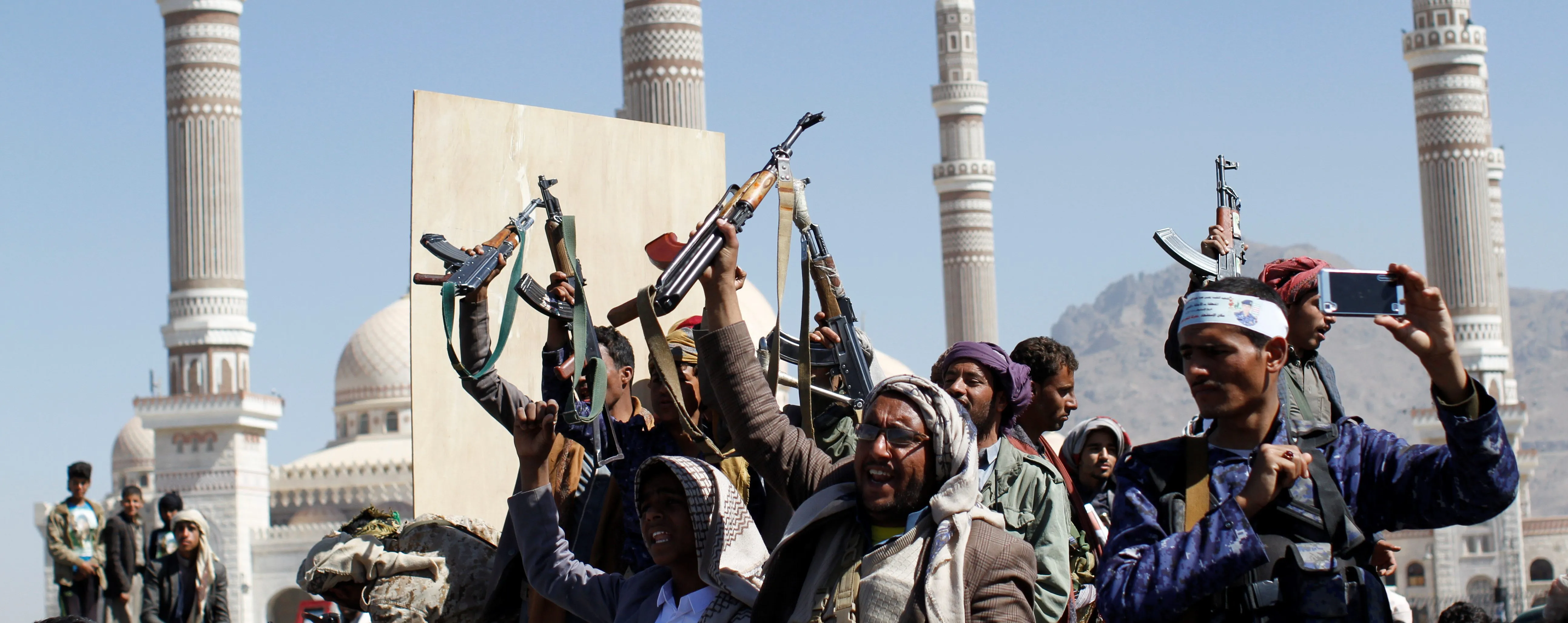The Iran-aligned Houthis, who took control of a large portion of Yemen during a civil war, have threatened to strike ships connected to Israel or headed toward Israeli ports to help Hamas Islamists fighting the Israeli operation in Gaza.

Despite Russia and China’s dissent, the UN Security Council passed a resolution demanding an immediate halt to the Houthi rebels of Yemen’s attacks on ships in the Red Sea. The resolution further demanded that the Houthis free the 25 crew members and vehicle carrier Galaxy Leader, which was taken over by the group on November 19.
The Houthis: Who Are They?
The Houthis are a large clan that came from the Saada region in the northwest of Yemen. They follow the branch of Shiism known as Zaydi. Approximately 35% of Yemen’s population is Zaydi. Yemen was controlled for a millennium by a Zaydi imamate, who was ousted in 1962.

The Zaydis, once a significant force in Yemen, have been fighting to regain their influence and power. In response to Salafist preachers establishing bases in Houthi territories, the Houthi clan launched a campaign to restore Zaydi traditions in the 1980s. However, not all Zaydis support the Houthi cause. Abdul Malik al Houthi, the spiritual, military, and political leader since 2007, is the group’s leader.
Sensing that state-funded Salafist preachers were establishing bases in Houthi territories, the Houthi clan launched a campaign to restore Zaydi traditions in the 1980s. That being said, not all Zaydis support the Houthi cause. For nearly ten years, Yemen’s government and Houthi rebels have battled. Since 2011, the Houthi movement has grown to be a larger opposition movement to the central government, moving beyond its Zaydi origins. Additionally, the rebels have started calling themselves Ansarullah, or the “Party of God.”
Why are Houthis from Yemen attacking ships in the Red Sea?
With attacks on Red Sea ships and missile and drone launches against Israel in what they claim is an effort to aid Palestinians fighting in Gaza, Yemen’s Houthis, who are affiliated with Iran, are taking on a more prominent role in the Middle East.

In reaction to the Houthi attacks, U.S. Defense Secretary Lloyd Austin announced on Tuesday the formation of an international operation to protect trade in the Red Sea. However, The Houthis’ involvement has increased the regional hazards associated with the fight, endangering maritime channels that carry a large portion of the world’s oil supply and unsettling governments around the Red Maritime as Houthi drones and missiles fly near Israel.
Who is supporting the Houthis support? How?
Iranian authorities have spoken highly of the Houthis and drawn parallels between them and Hezbollah. Senior advisor to Supreme Leader Khamenei, Ali Akbar Velayati, stated in October 2014 that “Iran supports the rightful struggles of Ansarullah in Yemen and considers this movement as part of the successful Islamic Awakening movements.” However, Tehran has always denied giving the Houthis money, weapons, or training.

Although citing Iran’s influence in the area, Saudi Arabia has long accused Iran of equipping the Houthis to wage a proxy war. The late Saudi Foreign Minister, Prince Saud al Faisal, voiced concerns in 2015 over Iran’s influence in the area. A U.S. admiral stated that they had stopped five weapons shipments from Iran to the Arabian Peninsula in 2016. The shipments contained automatic rifles, sniper rifles, and anti-tank missiles.
Iran refuted these claims, claiming that their support was purely spiritual and advising. When Iran was accused by Saudi Arabia of committing an act of war by firing a missile at the Houthi capital in Yemen in late 2017, tensions increased. Iran refuted any connection to the assault.
How do the Houthis and other Islamists in Yemen relate to each other?
The Houthis, a Sunni Islamist party linked to the Muslim Brotherhood, have a strained relationship with Islah, a Sunni Islamist party. Islah accuses the Houthis of being an Iranian proxy and causing unrest in Yemen. Despite initial reconciliation, the two groups brokered a deal in December to cease hostilities, with Islah calling for ceasefires and release of prisoners.

However, the Houthis, Sunni extremist groups, and Islah have been at odds since 2015, with the Houthis kidnapping and detaining Islah party leaders. Tensions escalated after Islah declared support for Saudi-led airstrikes. Infidel Houthis are at odds with Sunni extremist groups, such as ISIS, which claimed responsibility for suicide bomb attacks on Zaydi mosques. AQAP has frequently targeted the Houthis.
Targeting ships across the Red Sea, the Houthis release the biggest drone and missile strike
Houthis unlock the biggest drone and missile assault in the Red Sea, aimed against ships. The Houthi rebels in Yemen were ordered by the U.N. Security Council to cease their attacks on foreign ships in the Red Sea. According to the US military, there have been over twenty attacks in the previous seven weeks.

However, the Houthi rebels in Yemen were ordered by the United Nations Security Council to cease their attacks on foreign ships in the Red Sea. According to the US military, there have been over twenty attacks in the previous seven weeks. The Houthis launched almost 20 drones and missiles against American and NATO vessels on Tuesday, in what was considered the most significant strike. Reporting on the escalation and U.S. options is done by Nick Schifrin.












Comments 1